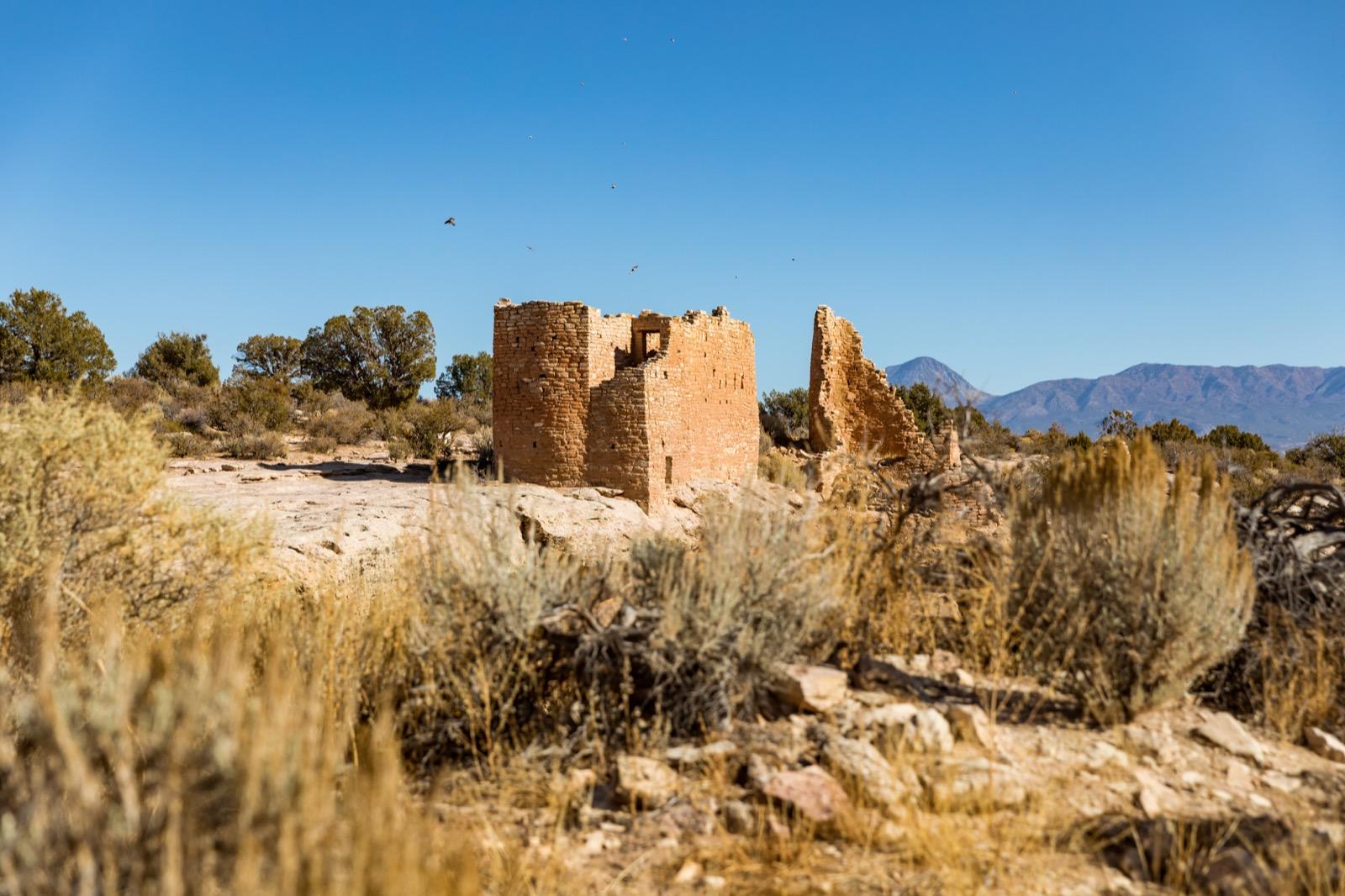Of the six groups, Cajon Tower and Square Tower reside on Utah land, while Cutthroat Castle, Holly, Horseshoe and Hackberry, and Goodman Point are located in Colorado. The structures vary in shape and size, including circular kivas (ceremonial rooms) and towers, and square or D-shaped dwellings. The Cutthroat Castle Group is the largest ruin, with several kivas below ground level, while the Square Tower Group includes the largest collection of pueblos. The Cajon Group is another large structure, estimated to house close to 100 people. Unusual in its D-shape, the Horseshoe House is believed to be several rooms designed around a central kiva. The Holly Group features a rock art panel that may have served as a solar calendar.
The Hovenweep towers were first documented by W.D. Huntington during a Mormon expedition in 1854. Ute and Navajo guides were already familiar with the ruins of Hovenweep, which means 'deserted valley' in Paiute. After a 1903 survey, Hovenweep National Monument became federally protected under President Harding in 1923. The monument was placed on the National Register of Historic Places and excavation began in the 1970s. Hovenweep is managed by the National Park Service. Services include a visitor center and campsite at the Square Tower Group, hiking trails, and restrooms. To reach Hovenweep from Bluff and Blanding, take U.S. Highway 191 to Highway 262.


